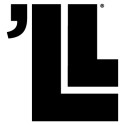If you’re like most hardworking employees your lunch hour is spent holed up in your cubicle — noshing in front of your computer while simultaneously completing that report for el jefe, checking ESPN.com for the latest scores and talking to what’s-her-name on your cell. While we admire your multitasking mastery (and cringe at your predictable indigestion) we have an alternative that could potentially move you forward in your career: lunch networking. For Ali T. Curi, President and founder of New York City-based networking events company Hispanic Professionals Networking Group, building career connections over lunch is a fine art that requires striking a balance to be effective.
Figure Out What You Want
There are a variety of reasons to leave your cube for an hour. Maybe you enjoy working at your current company and want to be considered for a future promotion. You can set a lunch date with a human resources manager about potential employment opportunities. Maybe you’re an entrepreneur looking to drum up new clients or perhaps you’re trying to figure out how to move forward in your industry all together. According to Curi, “Networking means building relationships,” and lunch is a good way to introduce yourself to a new contact and pick their brain for information. “Dinner [meetings are] usually for people you know and for businesses that you’ve already established relationships with,” he explains.
Setting the Agenda
When you’re planning your lunch meeting let your guest know what you want to meet about and why. Do you want to find out more about what the person does or learn more about their company? “The way to effectively network during your lunch hour is being prepared enough to know what you want to ask,” Curi says. He admits that he only accepts lunch invitations that have a clear objective. Once you’ve figured out what you want out of the meeting, do your research and prepare a list of questions or key points you want to discuss at the meeting.
After you’ve done your homework Curi recommends choosing a location that is convenient for your lunch guest’s place of work. “Be mindful that it’s their time and that they are doing you a favor,” he says. When it comes to selecting the restaurant, keep it simple, a café or diner will do just fine.
Keep It Strictly Business
Sometimes, networking can feel forced. During the meeting Curi says to start by thanking the person for meeting with you. An attitude of gratitude goes a long way. Cutting out chit-chat also keeps your time focused and on-track as well as business-like. “You can be nice and act like yourself but understand that this is not the time to [get too personal] and tell them about your weekend,” Curi explains.
While you’re focused on gathering recon about this person, the company or your chances for moving up at your present job, remember that some topics –like salary — are better left untouched. “I would just steer clear,” Curi says of broaching the topic of compensation. “[People] are not comfortable divulging it on behalf of someone else or the company. Trying to address what you’ve heard or gossip you’ve heard through the grapevine is also never a good move. “No one wants to gossip necessarily if they don’t know you,” Curi says. “It’s not fair for someone to ask, ‘So what is it REALLY like?’” You don’t want to make your guest feel uncomfortable, so keeping things strictly professional but informative is the key to a successful lunch meeting.
Follow Etiquette
At this point you are building a rapport and going over your prepared agenda and the waiter comes to take your order. Do you indulge and order a drink? Survey says: absolutely no booze, especially if you are taking your supervisor or a senior level person out. According to Curi, it sets the wrong tone and sends a negative message. Keep in mind there are exceptions. For example, if you’re taking out el jefe and he orders alcohol you should only order whatever drink he’s having. That said if he gets a plain iced tea but you’re craving one of the Long-Island-variety, suck it up and say: “I’ll have whatever you’re having.”
You are probably thinking who’s footing the bill? There’s no going dutch when you’re doing business. “If it’s a lunch and you are the doing the inviting, the proper etiquette is that you should [pay],” Curi affirms. Most important, keep your lunch hour, a lunch hour — not an hour and a half. In other words, keep track of the time. However long you’ve agreed to meet for, you should stick to the schedule and respect that person’s time.
Wrapping It Up
So you’ve made it through the meeting without any major snafus. Seal the deal with a prompt follow-up. Curi recommends sending both a handwritten thank you note and email if you can. You want to stick out in their mind. With all the preparation and knowledge of proper etiquette that lunch hour you have invested in could yield just the opportunity you have been looking for.

